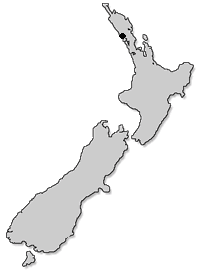Opononi and Omapere

Quiet beauty in the Hokianga region and its surrounds
HOKIANGA

|
By
Richard Moore
Beauty and tranquility come to mind when coming up with words to describe the Hokianga and, in particular, the neighbouring seaside towns of Opononi and Omapere.
Opononi is the more well known, largely because of a friendly bottlenose dolphin that visited the area in the 1950s.
She moved into the area in 1955 following fishing boats on the Hokianga harbour and proved a human-friendly visitor - allowing children to swim with her and even touch her.
Opo would also perform for the locals and as her fame spread more and more tourists came to see the dolphin's antics.
Unfortunately in 1956 Opo was found dead in a crevice at Koutu Point, which is further inland up the Hokianga harbour, and the causes were blamed on either her getting stranded while hunting fish or else killed by a fisherman using gelignite.
Opo is buried next to the War Memorial Hall and a statue of a child riding her stands on the main beach road at Opononi.
It is a beautiful spot to stop and and look across the harbour to the large sandunes on the far shore.
And the Opononi Resort Hotel is the perfect spot to sit and dine outside while looking at the magnificent view.
Omapere is just down the road from Opononi and it has an even more special spot to eat.
It is at the Copthorne Hotel - a grand old lady that not only boasts a colonial atmosphere (albeit one with all the modern conveniences - but more great views of the dunes and a fabulous wharf.
If you were to pick a place to just chill for a weekend then this could well be the spot.
Just south of Omapere is the Waipoua Forest home to some of the greatest living things on the planet - giant kauri trees. The largest is Tane Mahuta which has been in the forest for 2000 years.
You can walk to Tane Mahuta yourself or, for a special experience, join with Footprints Waipoua and be guided through to the iconic tree at night.
A Maori guide will explain the protocols for your visit and then you will enter a very spiritual world and learn about the early Maori voyager Kupe who navigated from Hawaiiki to New Zealand using the stars.
Visitors will experience the affinity that early Maori had with the forest and the deep spiritual respect they still hold for the kauri giants still growing there.

|